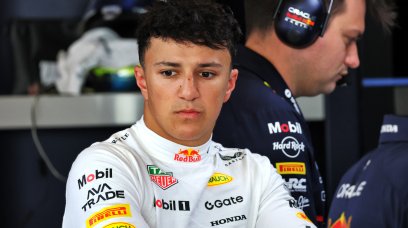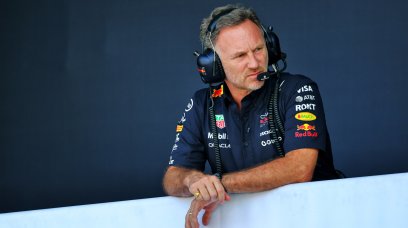A recent comment from Formula 1 commentator David Croft suggested that the FIA should no longer create the rules for the sport. For the 73 years that the F1 World Championship has existed, the FIA has been F1’s governing body, drafting and signing off the regulations that have formed the pinnacle racing category - and little is going to change. “First and foremost, I’d have to stop the FIA being the rule-makers,” he told the Sky Sports F1 podcast. “That’s the trouble the commercial rights holder [Liberty Media] has, it’s that they don’t make the rules – they can have an influence because they have a standing on the F1 Commission, but they don’t make the rules… the FIA does. “I think the time has come in F1 to actually bring the two parties a lot more closely aligned.” The prospect itself seems archaic and handing the complete set of F1 keys to the commercial rights holders spells danger.
Domination
The FIA currently signs off the technical, sporting and financial regulations that govern the sport and form everything we know and understand about the category today. The latest major upheaval of the technical regulations occurred last year, with Red Bull shooting out of the blocks and winning the Drivers’ and Constructors’ Championship comfortably - a feat that it is set to repeat this season. Domination at the start of a new era is nothing new for F1. Mercedes rushed to the head of the field at the dawn of the turbo-hybrid era in 2014 and remained untouchable for several years. Complaints over the predictability of the current campaign, which has seen Red Bull secure all 12 race victories so far, led to Croft’s suggestion. But although the FIA has been maligned by fans in recent years, especially after the 2021 Abu Dhabi Grand Prix and Red Bull’s budget cap breach last season, the existence of both the FIA and Formula One Management (FOM) creates a necessary balance for F1.
The issues
The commercial rights holder's primary interest is to make money and Liberty Media’s 2017 investment has so far proven to be a solid acquisition. The sport is booming with record race attendances and increased interest in hosting a race, fuelled by the success of its promotion (mainly Netflix’s Drive To Survive docuseries). But there needs to be an equilibrium. Currently, the regulatory process consists of 30 votes - 10 made up of one each for the teams, 10 for the FIA and 10 for FOM. In order for a rule change to pass, 25 out of 30 votes are needed. This ensures that the FIA and FOM have to vote together to pass through such changes [although the FIA has the option to overrule in the interest of safety, as was the case with the halo crash structure]. It is within that area of safety that a problem could lie - consider for a moment that the commercial rights holders are in charge of deciding how the cars are constructed, and the shortcuts that could be taken to complete the final challenges. The less it costs the teams to race, the less money FOM would need to pay out at the end of the year. Additionally, in 2001, the EU ratified the commercial rights deal between F1 and the FIA, which decreed that if the FIA wished to detach itself from its commercial rights, there had to be a hard split between regulatory and commercial parties. It put in place the necessary stability to ensure that no single party would run amok with decision-making for the sole purpose of profit. Recent history also tells us that championships in which this has not been the case have failed - A1GP, a category that saw nations run as teams, started outside the FIA body and lasted just four seasons before collapsing. Recently the all-female W Series was placed into administration after just three seasons. Admittedly F1 is a highly established sporting category and does not presently possess the dangers that many start-ups have of going out of business. But the F1 world can be chaotic enough at the best of times - there is little need for more instability or it risks not being taken seriously by teams, sponsors and fans.
Most read







